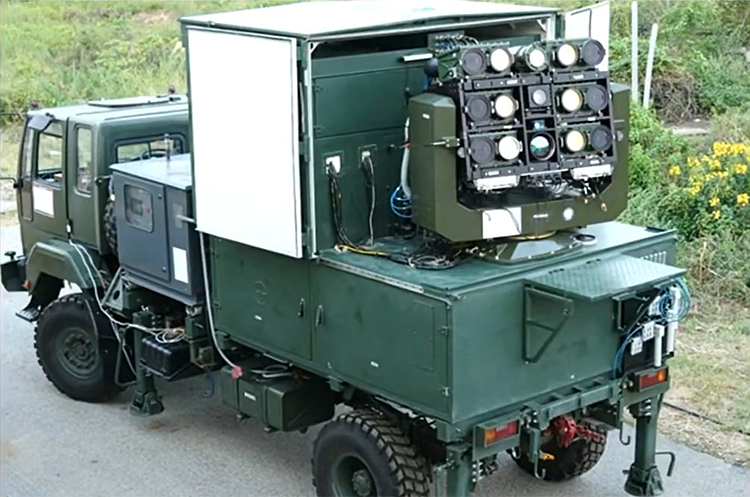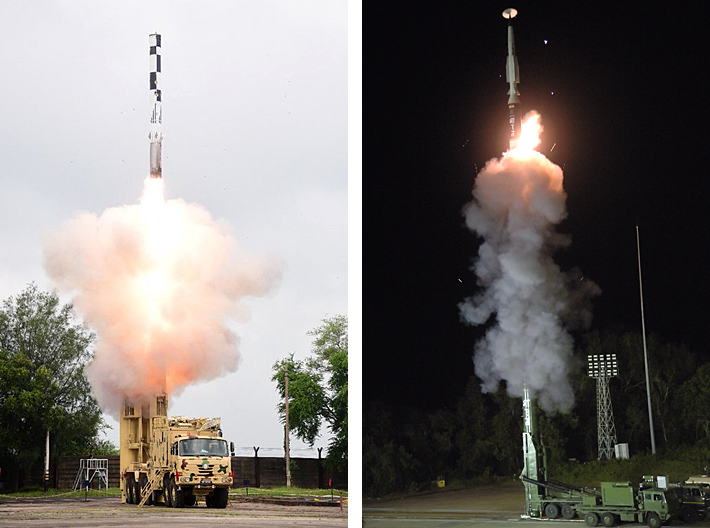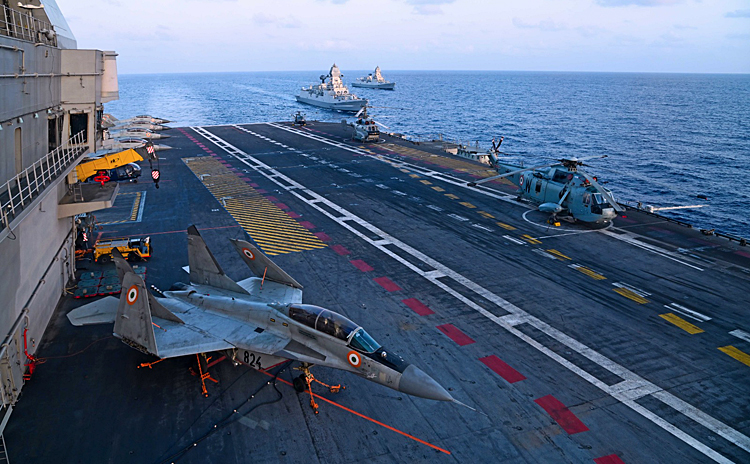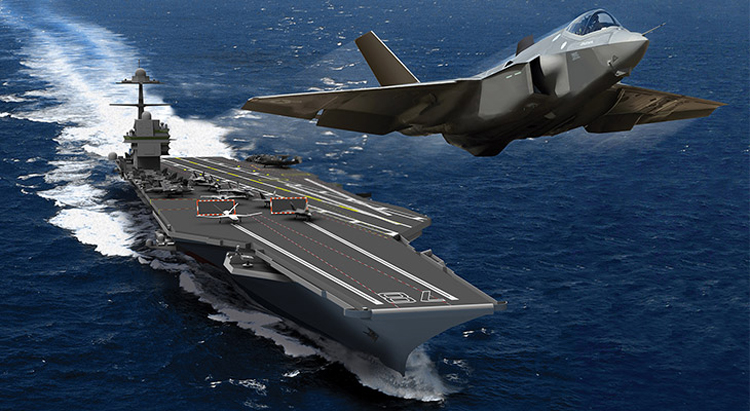INDIAN ARMED FORCES CHIEFS ON OUR RELENTLESS AND FOCUSED PUBLISHING EFFORTS

The insightful articles, inspiring narrations and analytical perspectives presented by the Editorial Team, establish an alluring connect with the reader. My compliments and best wishes to SP Guide Publications.

"Over the past 60 years, the growth of SP Guide Publications has mirrored the rising stature of Indian Navy. Its well-researched and informative magazines on Defence and Aerospace sector have served to shape an educated opinion of our military personnel, policy makers and the public alike. I wish SP's Publication team continued success, fair winds and following seas in all future endeavour!"

Since, its inception in 1964, SP Guide Publications has consistently demonstrated commitment to high-quality journalism in the aerospace and defence sectors, earning a well-deserved reputation as Asia's largest media house in this domain. I wish SP Guide Publications continued success in its pursuit of excellence.
- A leap in Indian aviation: Prime Minister Modi inaugurates Safran's Global MRO Hub in Hyderabad, Calls It a Milestone
- All about HAMMER Smart Precision Guided Weapon in India — “BEL-Safran Collaboration”
- India, Germany deepen defence ties as High Defence Committee charts ambitious plan
- True strategic autonomy will come only when our code is as indigenous as our hardware: Rajnath Singh
- EXCLUSIVE: Manish Kumar Jha speaks with Air Marshal Ashutosh Dixit, Chief of Integrated Defence Staff (CISC) at Headquarters, Integrated Defence Staff (IDS)
- Experts Speak: G20 Summit: A Sign of Global Fracture
India's 15-Year Defence Plan
The plans list out the quantities and capabilities of over 200 individual weapon systems and technologies required by the Armed Forces over the next 15 years and will guide the defence industry (both public and private) on where to focus its research and development (R&D) efforts
 |
The Author is Former Director General of Information Systems and A Special Forces Veteran, Indian Army |

The Ministry of Defence (MoD) has spelt out a 15-Year Defence Modernisation Plan for India 2025–2040; ambitious acquisitions worth billions, focusing on advanced technologies. The roadmap emphasises artificial intelligence (AI), space-based warfare capabilities, unmanned systems, and direct energy weapons (DEWs), to include nuclear propulsion for naval ships, stealth UCAVs, hypersonic missiles, laser-based weapons and a range of drones and anti-drone systems. India could build its first nuclear-powered aircraft carrier as part of a 15-year defence modernisation plan that also includes the Indian Navy using domestically made fighter jets for the first time.
India could build its first nuclear-powered aircraft carrier as part of a 15-year defence modernisation plan that also includes the Indian Navy using domestically made fighter jets for the first time.
The detailed plans, which list out the quantities and capabilities of over 200 individual weapon systems and technologies required by the Armed Forces over the next 15 years, will guide the defence industry (both public and private) on where to focus its research and development (R&D) efforts. The Technology Vision and Capability Roadmap gave an insight into plans of the Armed Forces to adapt to the changing nature of warfare, with an emphasis on emerging technologies like AI, space-based warfare, unmanned systems in all domains and DEWs.


The plan includes nuclear propulsion for at least 10 future surface combatants, including a new aircraft carrier required in the coming years. The Navy also requires Electromagnetic Aircraft Launch Systems enabling the aircraft carrier the capability to operate heavier aircraft. The Armed Forces have projected the need for onboard cyber defence systems for satellites, cyber hardening of satellite communication links and satellite-based laser range finders, and several reconnaissance satellites. To meet the requirements of space warfare, the plan also includes servicing and refuelling of satellites in orbit, modular and miniaturised sensors and multi constellation GNSS receivers. The plan also spells out the requirement of tactical high energy laser systems for the Army and the IAF, with the potential of anti-satellite operations also. The Armed Forces also plan to induct high-power electromagnetic weapon systems in the coming years.
Considering the potential of hypersonic weapons, the Armed Forces are to acquire a minimum 500 hypersonic missiles for high-speed strikes, in addition to acquiring detection systems for incoming hypersonic weapons.
Considering the potential of hypersonic weapons, the Armed Forces are to acquire a minimum 500 hypersonic missiles for high-speed strikes, in addition to acquiring detection systems for incoming hypersonic weapons. For operations in the mountains, the Army is to acquire a minimum 400 light tanks with advanced network and intelligence gathering capabilities, in addition to over 1,800 next generation main battle tanks (MBT). The light tanks to be deployed against China in Ladakh will have integration with loitering munitions with drones capable of advanced electronic warfare.

Procurements for the Army include: 1,800 futuristic tanks to replace the T-72 fleet; 400 light tanks; 70 MALE UAVs having 1,500 km range operating at 60,000 feet; minimum 800 loitering munitions with 20 km range; 400 UAV-launched precision guided missiles; 700 robotic counter improvised explosive devices; 3,000 vehicle mounted infantry mortar systems; 50,000 next generation ATGMs with over 5-km range and 90 per cent accuracy; 50,000 tank mounted ATGMs; 6,00,000 enhanced range artillery rounds; over 4,000 AI users to integrate existing technologies; 50 smart adaptive jammers against swarm drones; 50 electronic bubbles.
The plan includes nuclear propulsion for at least 10 future surface combatants, including a new aircraft carrier required in the coming years.
Procurements plans for the Navy include: one aircraft carrier; two electromagnetic aircraft launch systems; 10 next generation destroyers and next generation frigates; seven next generation corvettes capable of surface and underwater operations; minimum 10 mine countermeasure vessels; five fleet support ships 200m long and 44,000 full load displacement; four landing platform docks for operations using specialised surface craft and integral helicopters; 100 next generation fast interceptor crafts; 20 high endurance autonomous underwater vehicles for anti-submarine warfare; twin-engine deck-based fighter aircraft; deck-based multi-role helicopters; maritime utility helicopters.

The IAF is looking at the procurement of: 20 stratospheric airships capable of communication relay and intelligence collection; five multiband programmable RF sensor satellites; over 350 medium-altitude long-range endurance drones with endurance of over 24 hours and operating altitude of 30,000 feet or above; 75 unmanned airships positioned above 18-20 km in stratosphere as high-altitude pseudo satellites; over 100 remotely piloted HALE VTOL ship-borne aircraft; tactical high-energy laser systems in large numbers; high powered electromagnetic systems in large numbers; over 150 stealth UCAVs; over 250 anti-swarm drone systems; over 20 DEWs.
Long term (2034–2040) plans include the possible induction of a nuclear-powered aircraft carrier, fully networked Indian military capability development plan across all domains, and implementation of long-term defence acquisition strategy, anchored in 'Make in India' and 'Atmanirbhar Bharat'.
According to an analyst, the roadmap could be in three phases as under:
- Short Term (2025–2028). Defence reforms India 2025–2040 begin with streamlined procurement under DAP 2020. Induction of 87 MALE UAVs and expanded use of 110+ air-launched BrahMos missiles. Deliveries of 99 GE F404 engines for Tejas Mk1A are underway. Testing of the multi-domain operations strategy through tri-service exercises. India allocated ₹1.72 lakh crore for capital procurement in FY2025–26, with 75 per cent earmarked for indigenous production.
- Midterm (2028–2034). Expansion of future defence projects 2030, such as hypersonic missile trials, loyal wingman UAVs, and precision artillery. Commissioning of new submarines and 5–10 Next Generation Destroyers. Wider use of AI for predictive maintenance and logistics. Target $25 billion in annual defence production and $5 billion in exports by 2040.
- Long term (2034–2040). Possible induction of a nuclear-powered aircraft carrier. Fully networked Indian military capability development plan across all domains. Implementation of long-term defence acquisition strategy, anchored in 'Make in India' and 'Atmanirbhar Bharat'. IAF aims to restore 42 squadrons, with at least 25 per cent fifth-generation fighters by 2040.

It is interesting to read American scholars writing that the era of aircraft carriers is gone because of precision weaponry which can target them. This appears more to dissuade other nations from acquiring aircraft carriers, while the US already has 11 aircraft carriers to dominate the seas and China plans to have six of them. China is undertaking extensive deep-sea operations. Numerically the PLA Navy (PLAN) is bigger than the US Navy albeit the US retains the technological edge. China presently has over 70 submarines, comprising about 12 nuclear-powered submarines (both attack and ballistic missile submarines) and around 60 diesel-electric submarines. But of concern to India should be the fact that the Chinese submarine fleet is poised to outsize the US Navy's submarine fleet by 2030.





